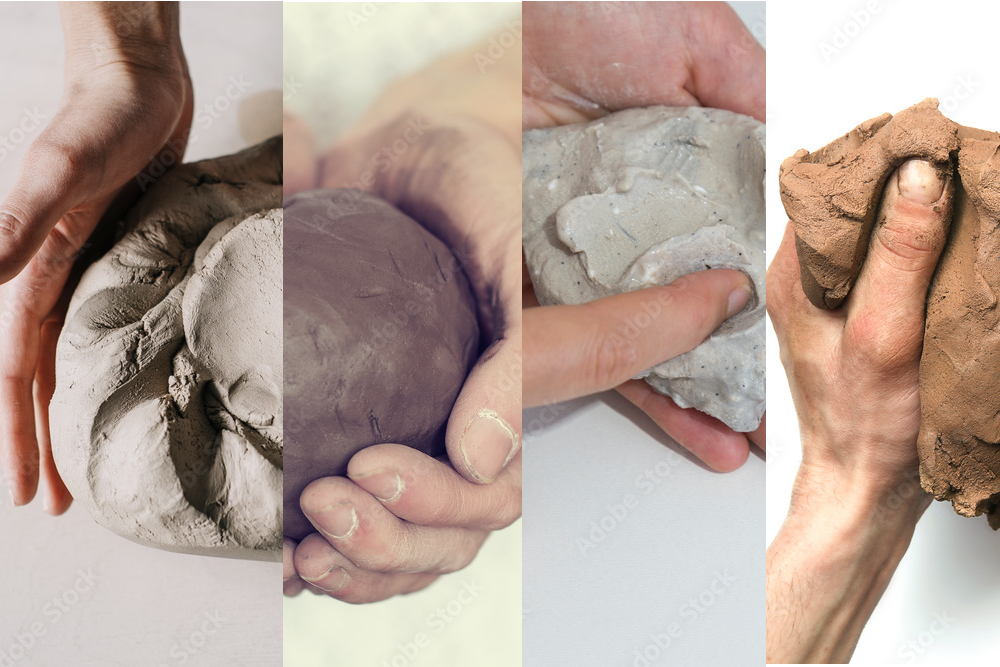Let’s take a look at some popular clay bodies you’re likely to encounter, along with their firing temperatures and what makes each one special. Understanding the differences can help you choose pieces that match your needs, your style, and your love for the handmade.
Stoneware: Durable, Functional, and Beautifully Practical
Firing Range: Cone 5 to Cone 10 (approx. 2165°F–2381°F)
Stoneware is one of the most commonly used clay bodies in modern studio pottery. It strikes a lovely balance between strength and artistry. Fired to a mid- to high-temperature, stoneware becomes dense and vitrified (meaning it’s non-porous), making it perfect for everyday functional use.
Why buyers love it:
-
Built to last: Stoneware is a hardy clay, usually microwave-safe and dishwasher-safe,
-
Natural textures: Its surface often shows subtle speckling or warm earth tones that bring out the richness of handmade glaze work.
-
Versatility: Whether it’s a go-to coffee mug or a sculptural vase, stoneware adapts beautifully to form and function alike.
Earthenware: Warm, Colorful, and Full of Charm
Firing Range: Cone 06 to Cone 3 (approx. 1830°F–2100°F)
Earthenware is a low-fire clay that’s been used for centuries around the world. It has a more porous structure than stoneware or porcelain, and it’s known for its rich, warm tones — reds, oranges, and browns — especially when unglazed.
Why buyers love it:
-
Bright and bold: Artists often use earthenware to create colorful, hand-painted designs that really pop.
-
Textural appeal: The slightly softer clay is ideal for hand-building and sculptural work — often resulting in more organic, expressive shapes.
-
Inviting warmth: Earthenware has a rustic charm that fits beautifully into home décor, even if it’s not your everyday dishware.
Porcelain: Refined, Translucent, and Luminous
Firing Range: Cone 9 to Cone 14 (approx. 2300°F–2550°F)
Porcelain is a high-fire clay prized for its smooth texture, strength, and delicate appearance. It’s more challenging to work with (even for experienced potters), but when done well, it produces truly stunning results.
Why buyers love it:
-
Soft elegance: Porcelain is typically pure white or ivory, with a silky, refined surface that pairs beautifully with minimal or intricate design.
-
Light play: Thin porcelain pieces can be translucent, letting light pass through and creating a soft, glowing effect.
-
Collectible quality: Many porcelain pieces — from teacups to vases — are treasured for their sophistication and craftsmanship.
Raku: Bold, Unpredictable, and Visually Striking
Firing Range: Typically removed from the kiln at ~1800°F while still glowing hot
Raku is primarily a firing technique that produces dramatic, one-of-a-kind surfaces. It’s a low-fire process where red-hot pots are pulled from the kiln and placed into combustible materials like sawdust or newspaper, resulting in smoke, crackle, and metallic effects. Usually a grog-heavy stoneware is used because it handles the temperature changes well, but virtually any clay can be used.
Why buyers love it:
-
Visual drama: Raku-fired pottery often features smoky glazes, crackled textures, and flashes of iridescent color.
-
Each piece is one-of-a-kind: No two pieces will ever look the same — the fire decides as much as the potter.
-
More art than function: Raku is typically decorative (not food- or water-safe unless specially glazed), but it makes a stunning visual statement.
How to Choose the Right Clay for You
When you're choosing a handmade ceramic piece, start by thinking about how you plan to use it — then let your heart do the rest.
-
For everyday function? Look for stoneware.
-
Drawn to color and charm? Earthenware may be calling your name.
-
Love elegance and detail? Consider porcelain.
-
Want something wild and expressive? Try a raku-fired piece.
Remember, the beauty of handmade pottery isn’t just in how it looks — it’s in how it feels, and how it connects you to the maker, the process, and the clay itself.

